
|
 Downloads
Downloads
|
 Prices
Prices
|
 Videos
Videos
|
GeolOil - Well log mineral solvers for carbonates, and clays
A mineral solver is an algorithm that tries to find the proportions of already assumed minerals present in the rock. Several mathematical methods have been tried historically, from linear system of equations, to artificially trained neural networks, and even empirical heuristic approaches. Linear system solvers require a set of good quality log curves, and not too many minerals to solve, otherwise the problem would be mathematically undetermined. Mineral solvers offer only a coarse guide to understand the rock composition. Nothing replaces the experience of qualified geologists and petrophysicists.
The GeolOil Petrophysical Functions module has mineral solvers for carbonate systems with limestones, dolomites, anhydrites, and halite salts (NaCl). GeolOil also solves clean eolian systems with sandstones and dolomites.
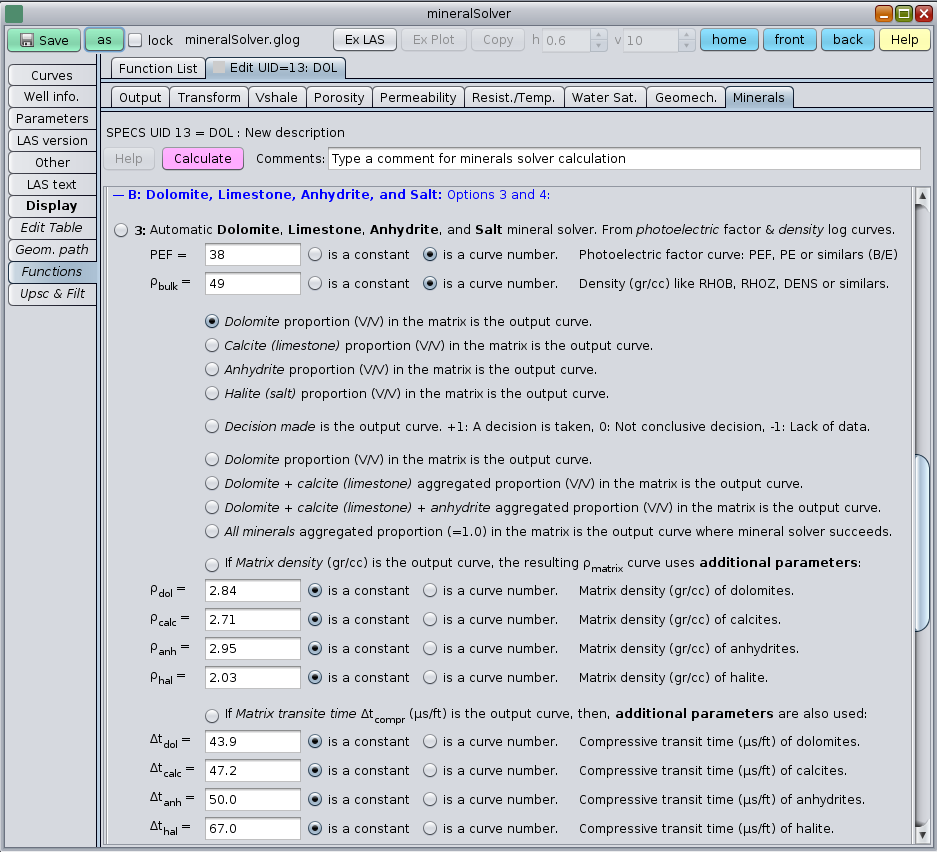
The GeolOil mineral solvers panel to compute the proportion of dolomites
No mineral solver is perfect. Curves may be noisy, unreliable, and even if the log curves are perfect, many other not considered minerals might be present. In the well log plot shown below from a Montana carbonate reservoir, GeolOil achieved very good results computing the mineral proportions of limestone, dolomite, anhydrite, and salt.
Changes in sedimentary environments
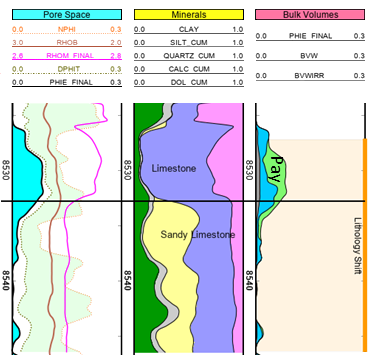
A mineral solver not only helps to estimate the mineral composition of the reservoir's rock. In some cases —like the figure to the left— it may detect changes in the sedimentary environment.
A pay zone is found at the upper interval. It is a fairly clean dolomitic limestone with a maximum porosity of around 10%.
The bottom zone is essentially a tight, shaly limestone sealing rock.
The change is abrupt, and happened within 1-2 feet of transition or less. The log had enough resolution and quality to capture the sharp change. Without a mineral solver, it would be very difficult to infer such change of environment.
The rightmost thin bar from the next figure below, with colors grey (anhydrite), light green (limestone, and salt), and dark green (shaly dolomite), is the interpretation manually made by an experienced geologist already familiarized with the depositional environment. The Minerals track on the right, shows the result of the mineral proportions solved by GeolOil from the PEFZ photoelectric factor, and RHOZ bulk density curves. The pink are filling represents the proportion of dolomite, indigo-blue represents the proportion of limestone, orange the proportion of anhydrite, green the proportion of salt, and blank white represents the zones for which GeolOil could not find a stable or reliable solution. Notice that there are blends limestones and dolomites, and the overall match is good.

A well log plot result of a mineral solver for limestone, dolomite, anhydrite, and salt
GeolOil provides also a Quartz-Dolomite solver for eolian environments. It is particularly useful to estimate the matrix density for partial blends of quartz and dolomites:
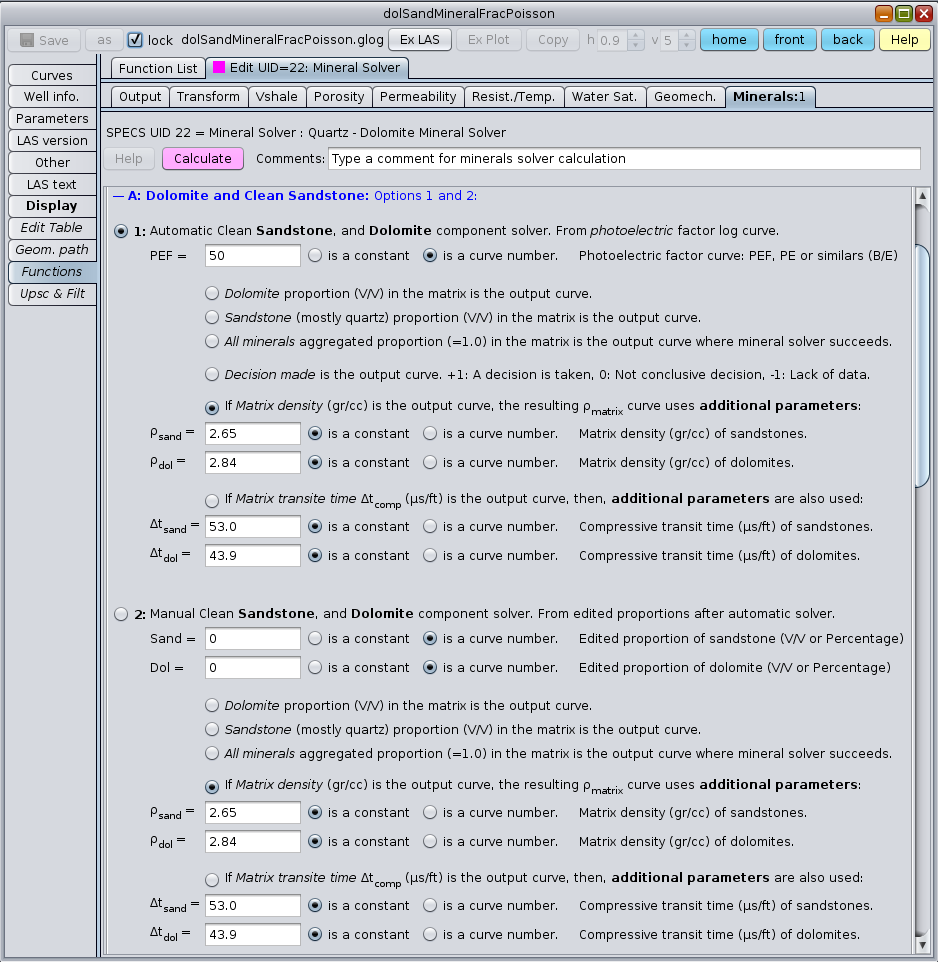
The mineral solver panel for a sandstone-dolomite eolian environment to compute matrix density

A mineral solved log plot for a sandstone-dolomite eolian environment
GeolOil Petrophysical Functions module also ships with a clays solver for clastic environments, aimed to solve approximate proportions of quartz, silt, illite, smectite, kaolinite, and chlorite. It offers mostly semi-quantitative analyses of the clay minerals present. Even "hard lab" techniques like XRD X Ray Diffraction are also semi-quantitative.
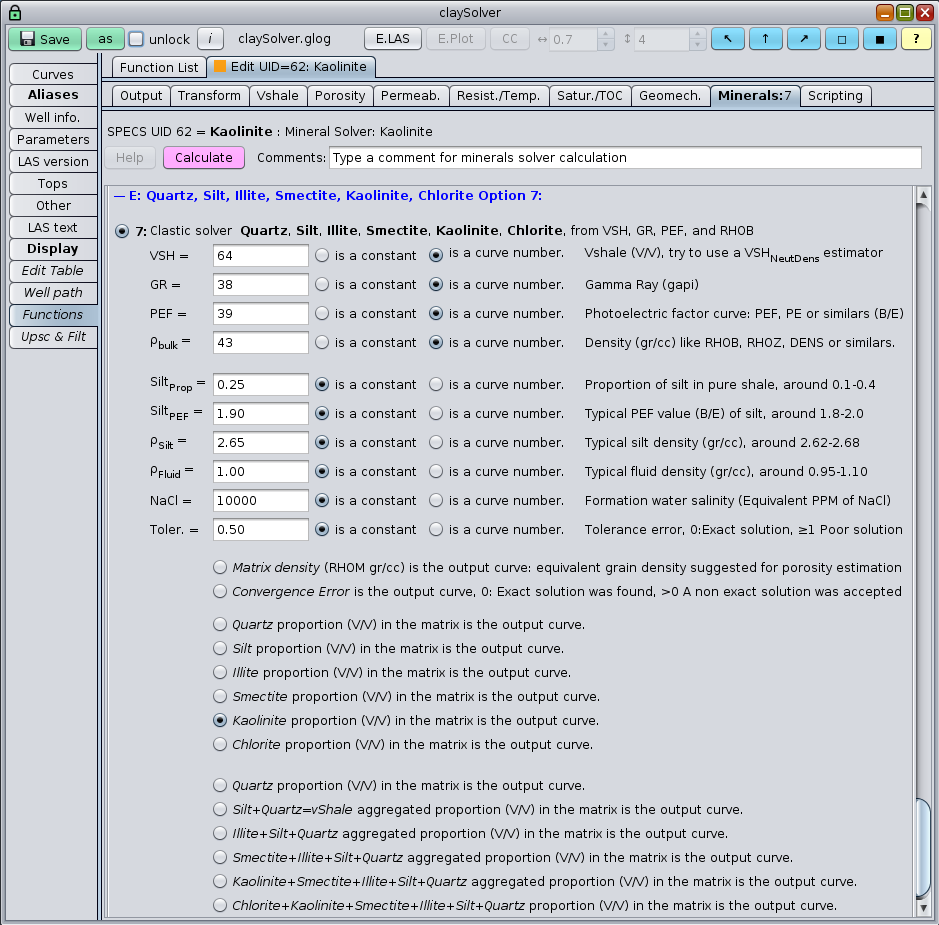
The mineral solver panel for clays.
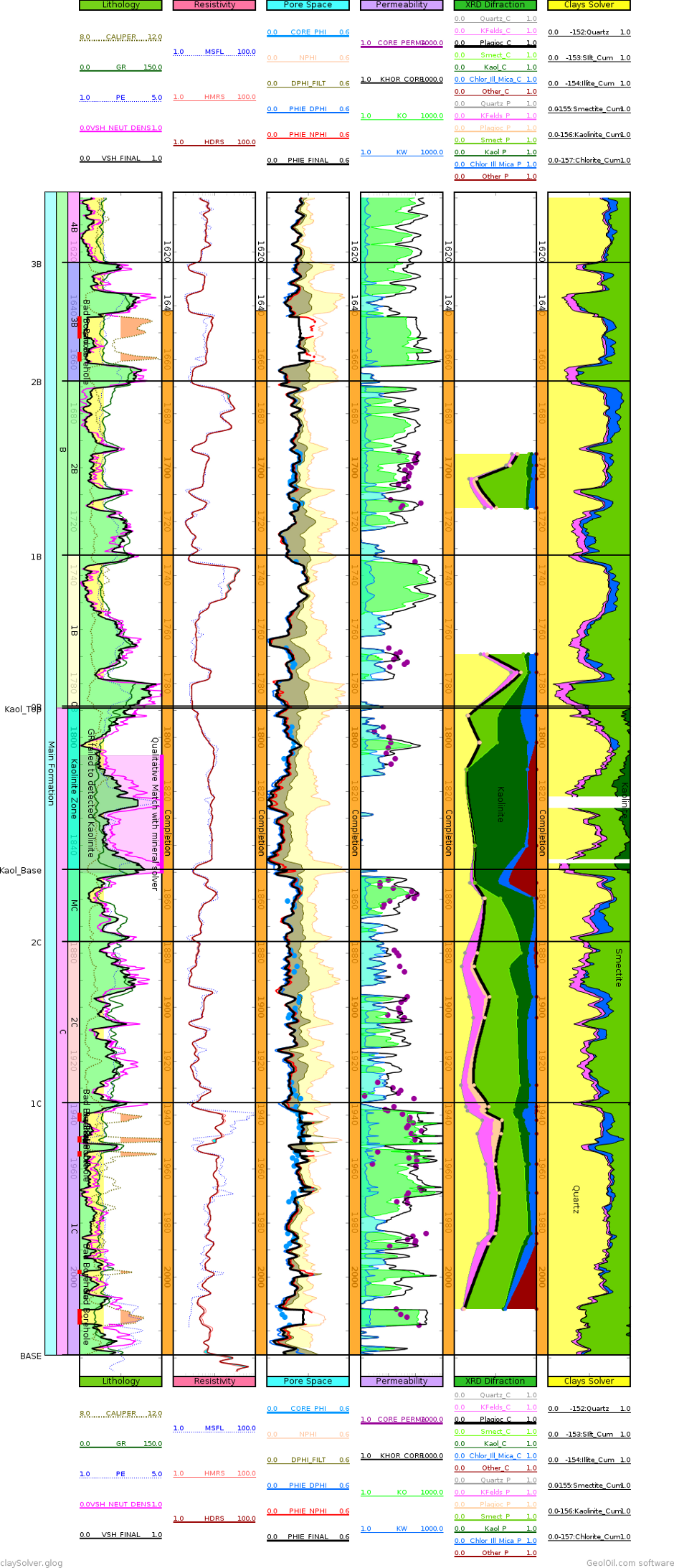
A mineral solved log plot for a clay minerals in a clastic environment
✔ NOTE: The GLOG file work-flow for the log above is available for download with the set of optional interpretation examples.
Another mineral solver shipped with the GeolOil Petrophysical Functions module is a clays-carbonate mineral solver, aimed to solve approximate proportions of clays, silt, quartz, calcite, and dolomite. It is usually more accurate than the former clays solver, (clays mineral composition is always very difficult to separate, but GeolOil does a useful qualitative work on this) so the proportions found can be more similar than those found via XRD diffraction.
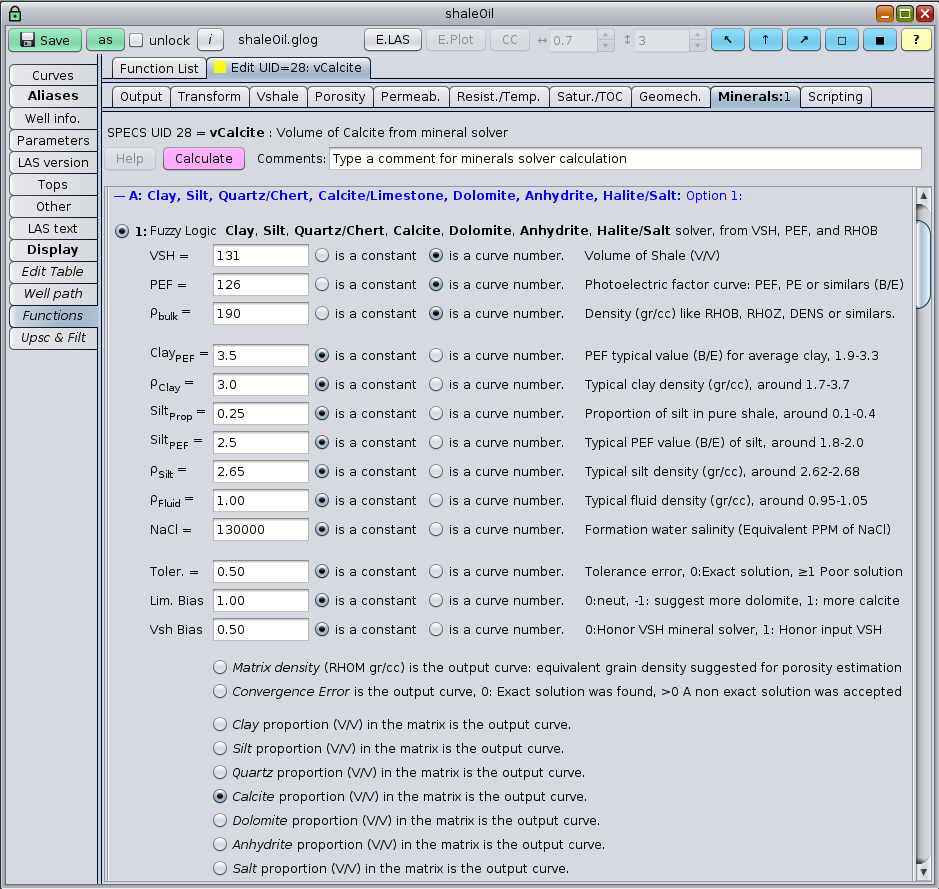
The mineral solver panel for clays-carbonates.
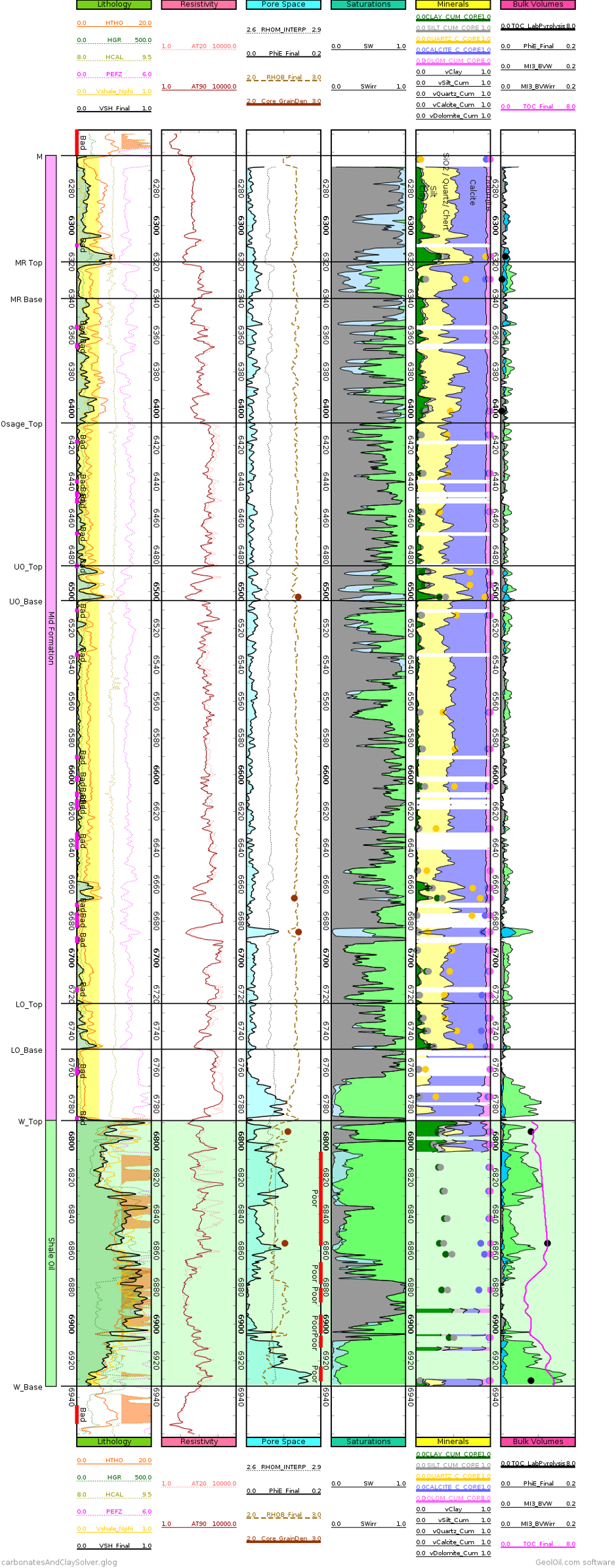
A mineral solved log plot for clays and carbonates. Notice the reasonable match with XRD lab points
✔ NOTE: The GLOG file work-flow for the log above is available for download with the set of optional interpretation examples.

|
Related article:
|

|
Related video:
|
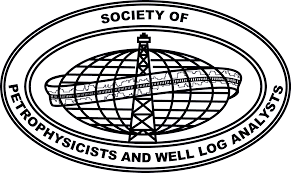 GeolOil is listed by the official
SPWLA software directory
GeolOil is listed by the official
SPWLA software directory
| |



|
|
|
© 2012-2025 GeolOil LLC. Please link or refer us under Creative Commons License CC-by-ND |




 TRAINING
TRAINING

 PAPERS
PAPERS
 REFERENCES
REFERENCES
 GET IN TOUCH
GET IN TOUCH

